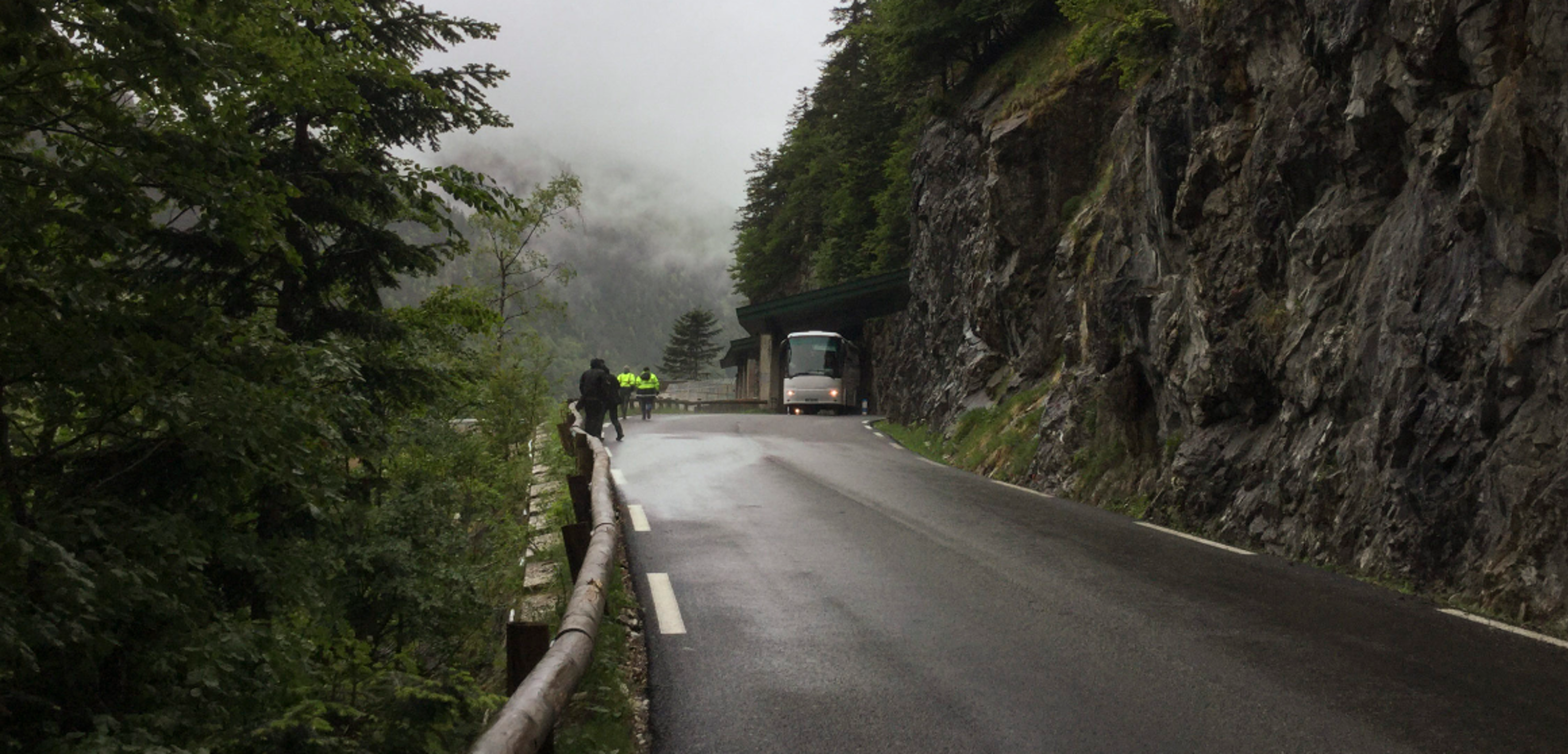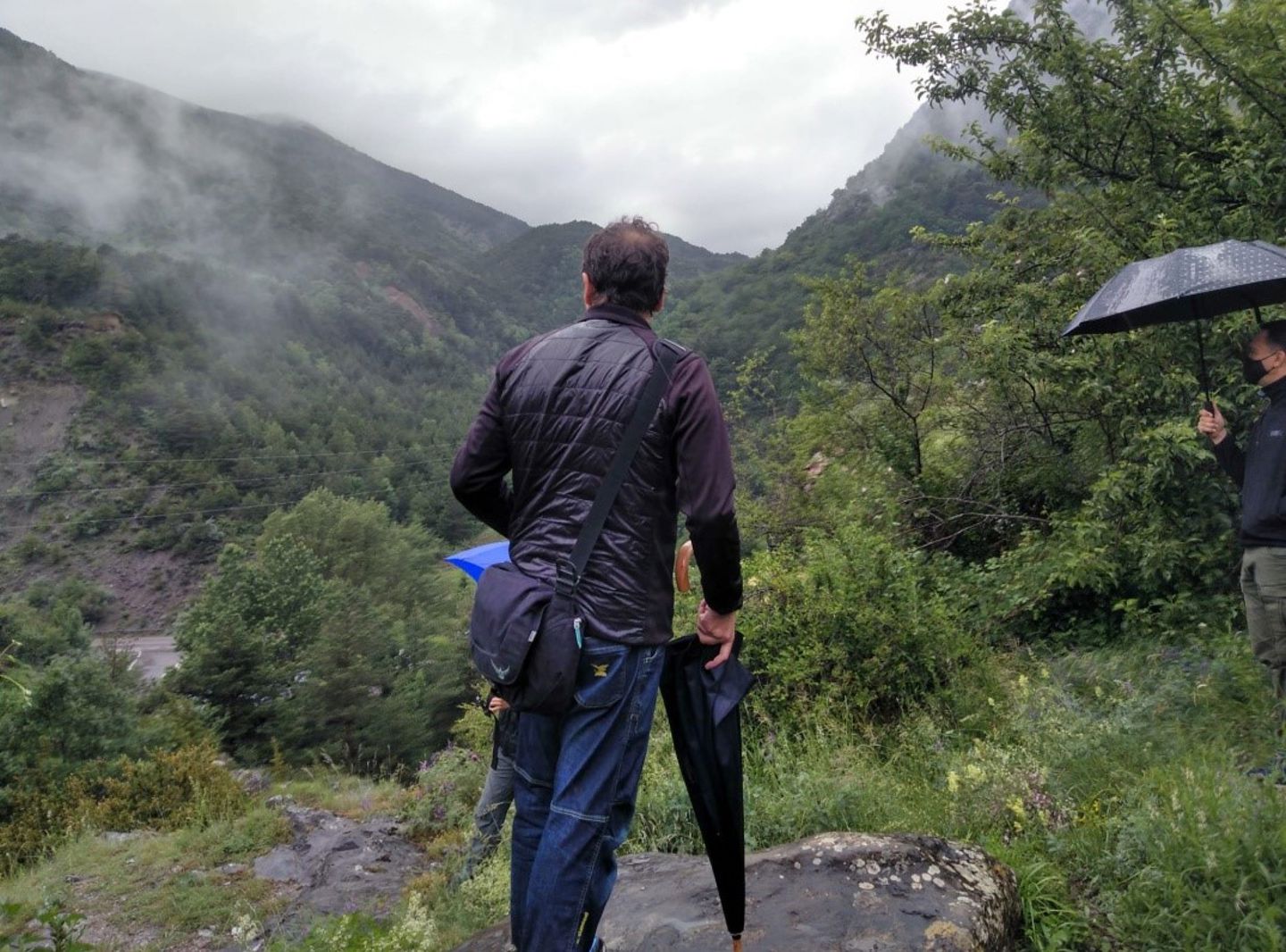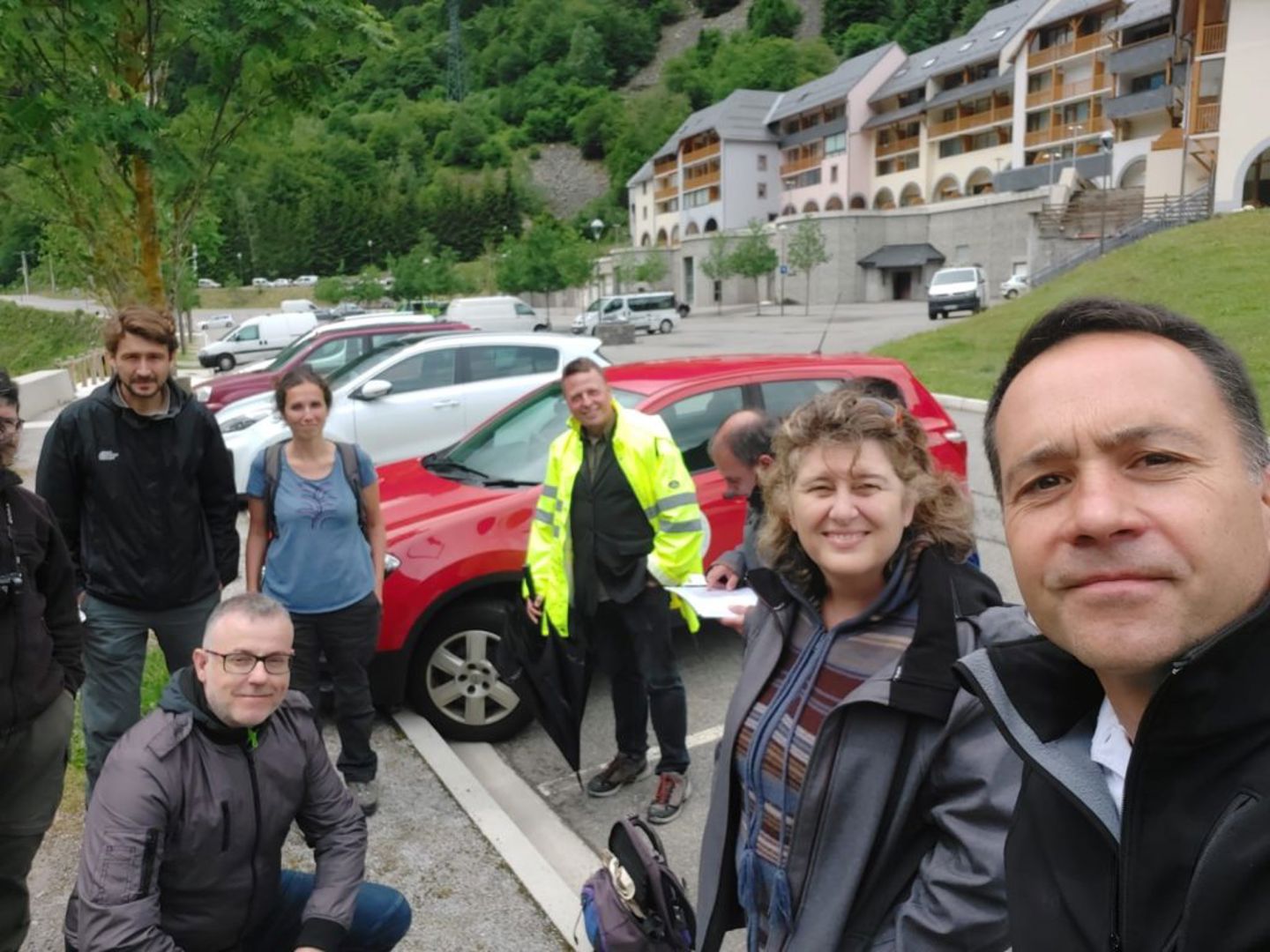Field Visit to Artouste and St. Elena sites, The Pyrenees.

Nature-based solutions are being implemented in two locations in the French-Spanish border in the framework of the Phusicos project: Artouste & Santa Elena. On 17th June, a visit to these two sites was organized by the EGTC Espace Portalet, the Working Community of the Pyrenees and the Pyrenean Climate Change Observatory in order to demonstrate that nature-based solutions can reduce the risk from extreme meteorological events, and that these solutions are viable, cost-effective and replicable.

By the St. Elena site. The end moraine with the unstable slope can be seen in the mid left of the photo.
The visit aimed to analyse the extent of problems such as erosion and rock falls affecting the road at both sites, as well as to assess how the nature based solutions will work, as well as discussing other possible technical solutions.
Specifically, participants visited Artouste’s forested mountainsides, where rock falls occur frequently due to instable release areas (rock ledges) near the road. Slopes next to the road are covered with beechs and fir trees, with large, medium, and small diameters and densities, on slopes of 100% gradient and more. The solutions to be implemented are based on active measures such as manual stabilisation or wooden structures that stabilise the rock massifs, as well as passive measures based on wood or stone structures that slow down or divert the blocks in their trajectories, enhancing the protective role of the forest.
On the Spanish side, the Santa Elena site features a slope in an end moraine with erosion problems in the relatively loose till deposits. Incidents are frequent; thus the slope has been protected with nets, which have proved to be ineffective in protecting against instability of the blocks embedded in the moraine. These blocks may have volumes greater than 1 m3 and can reach the roadway. The solutions implemented in the framework of Phusicos include the creation of masonry terraces, bio-engineering and plating of native vegetation to reduce runoff, improve infiltration and drainage while stabilising the morainic slope in general and the blocks in particular.
Twenty people participated, including local authorities and organisations involved in road and water management, as well as companies and organisations who work on territorial development and employment.

Pleased participants during the field trip. CTP’s project leader Eva Garcia Balaguer second from the right.